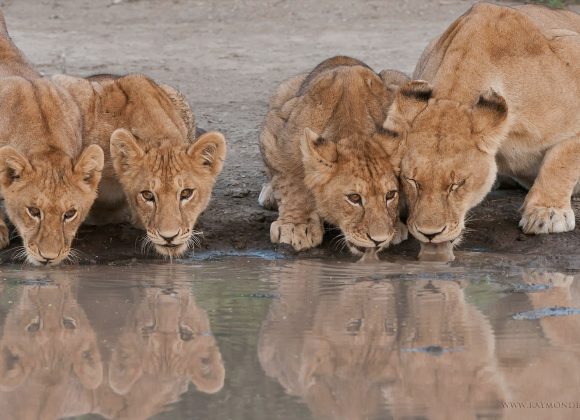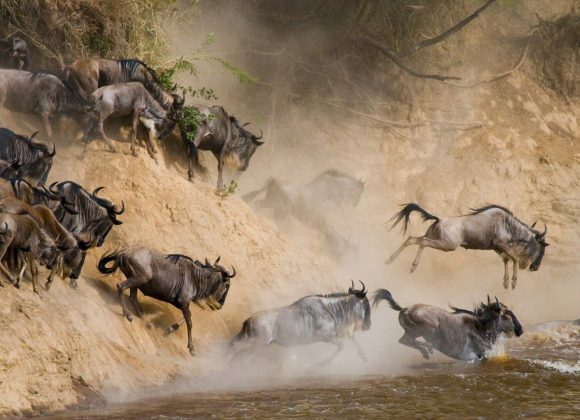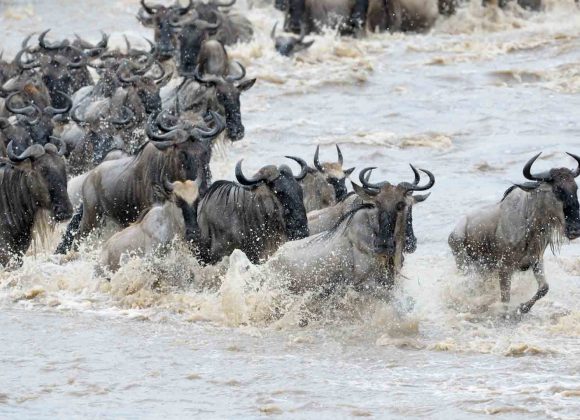On this morning day you will start by driving from Arusha to the Serengeti National Park crossing the Masai Steppe and the Ngorongoro Conservation Area, entering the South Serengeti. For flying safaris
The Great Wildebeest Migration
The largest mass movement of land mammals on the planet and one of the most breathtaking events in the animal kingdom, The Great Migration involves millions of ungulates, most notably wildebeest, as they follow an annual circular route around the Serengeti Ecosystem in an endless quest for fresh pastures and water. The rumbling hooves of wildebeest and the clouds of red dust they leave behind have become a symbol of the Serengeti, as well as a strong migratory instinct that defies crocodile-infested rivers, wild currents, and flocks of predators lying in wait.
3-Day Fly-in Kogatende
Picked up from your overnight hotel in the morning, Drive to Arusha airport for a morning flight to Serengeti National Park to Kogatende Airstrip. On the way to the camp you go on your first game drive around Serengeti. Reach at Serengeti Savannah camp
3 Days Fly in Central Serengeti Safari
Wake up for a full day of game drives in the Serengeti plains with picnic lunch taken at one of the designated sites, or if you wish you can do an early morning game drive then go back to the camp for breakfast then relax until in the afternoon. You can then go for a sunset game drives in the plains
A 500km round trip from the Southern Serengeti to the northern edge of the Masai Mara National Reserve, the Great Migration is probably Africa’s greatest wildlife spectacle and one of the World’s most exceptional natural phenomena.
The vertiginous immensity of the event is overwhelming, numbers so large that they are hard to visualize. Migrants include 1,300,000 Wildebeest, 360,000 Thomson’s Gazelle, 191,000 Zebra, and 12,000 Eland.
They join the anyway-large resident populations of herbivores, that feature 95,000 Topi, 76,000 Impala, 46,000 African Buffalo, 26,000 Grant’s Gazelle, 14,000 Kongoni, 9,000 Giraffe, 6,000 Warthog, 2,000 Waterbuck, and 2,000 Elephant.
And then, adding pathos and drama to the already extraordinary spectacle, a hungry constellation of predators -most notably lions and hyenas- follow the herbivores all along their clockwise migratory route.
Lions and hyenas are not the only meat-eaters, though, as cheetahs, leopards, wild dogs, and jackals, as well as every scavenger of the area, wait impatiently for their share of the banquet.
The Great Migration is a relatively recent phenomenon, dating back to the early 1960s. In the late 19th century a rinderpest epidemic eliminated over 90% of the wildebeest and cattle in the region. To prevent a further spreading of the disease, cattle was inoculated by veterinarians, and the disease soon disappeared from the area. As a result, the wildebeest population boomed in the 60´s and 70´s, from 260,000 to the 1.4 million individuals that currently inhabit the Serengeti ecosystem.
The growing herds were thus forced to migrate in their search for water and grazing grassland, starting the circular migratory route. The first seasonal treks were probably observed -and documented- in the 60s by Dr. Grzimek, who first described a definite pattern in the migratory moves.
In spite of the exceptionality and sheer beauty of the event, not everybody sees it with sympathy. The Maasai, for example, must rear their livestock in competition with the migrant herbivores, which they regard as transmitters of diseases and guilty of poisoning the rivers with their foetal sacs.
If you’re planning a photographic safari to anywhere in the Serengeti ecosystem, make sure you coincide with the wildebeest migration. If your schedule imposes travelling during the late July – September period, consider the Masai Mara National Reserve, where most of the wildlife is to be found. In any case, make the impossible to be in the right place at the right time for meeting the wildebeest and their co-migrant companions and foes.



